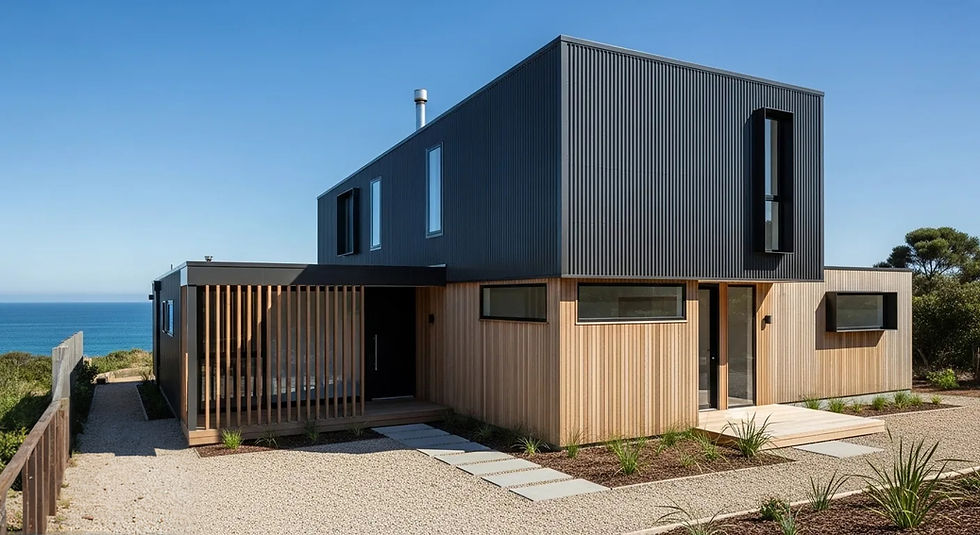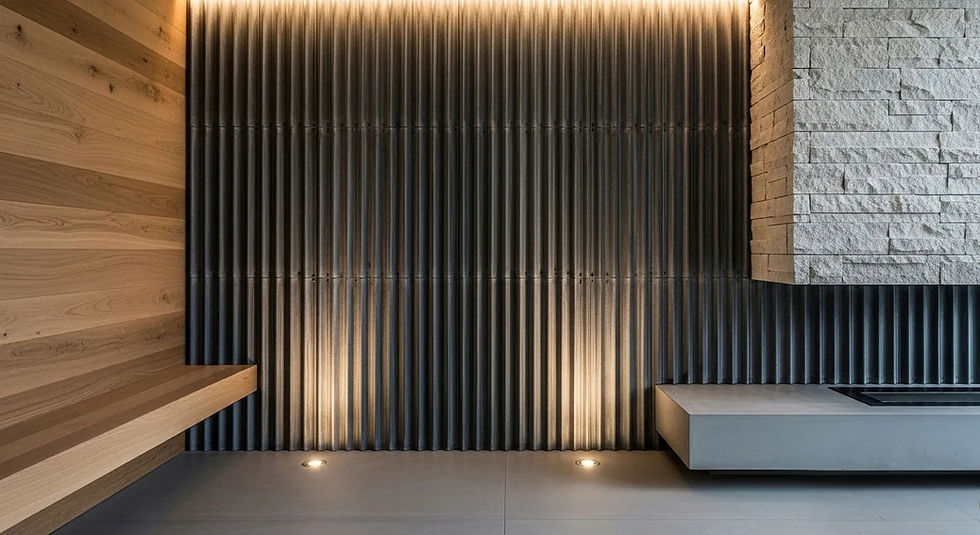Cladding with Corrugated Iron: Elevate Your Next Project with Rugged Elegance
- saeid sharifzade
- Aug 7
- 3 min read
Updated: 6 days ago

When it comes to Australian architectural fabrication, few materials feel as iconic as cladding with corrugated iron. From heritage homesteads on windswept plains to cutting-edge city builds, this time-tested profile still punches well above its weight for durability, design freedom, and sheer Aussie character. At Walnut, Melbourne’s specialists in custom metal fabrication, we’ve seen firsthand how a well-chosen sheet of corrugated can transform façades, roofs, fences, and even bespoke interior features.
Below, we unpack everything you need to know black corrugated iron, bold colours, the right profile and thickness, installation nuances, and insider tips gleaned from years of on-site experience. Whether you’re a homeowner planning a weekend reno, an architect chasing a distinctive façade treatment, or a builder looking for cost-effective speed, you’ll walk away with clear, actionable guidance.
You can listen to this blog here!
Why Corrugated Iron Still Reigns Supreme
Strength-to-weight ratio: The signature wave form gives corrugated iron panels impressive rigidity without excess mass, reducing sub-frame costs.
Bushfire performance: Paired with compliant insulation and flashings, corrugated profiles can help meet stringent BAL (Bushfire Attack Level) ratings.
Design flexibility: From rustic farmhouses to minimalist commercial boxes, corrugated iron cladding adapts effortlessly with the right colour and profile.
Speed of install: Wide sheet coverage and familiar fixing patterns minimise labour on both walls and corrugated iron roof installation.
Circular value: Made from recyclable steel, modern panels support responsible construction targets.

From Colour to Corrugated Iron Profile—Key Decisions Explained
1. Choosing Your Hue
Monument corrugated iron: A deep, charcoal-black Colorbond® tone—perfect for dramatic contrasts against timber.
Black corrugated iron: True matte blacks create sleek industrial façades or statement interior ceilings.
Coloured corrugated iron: Contemporary palettes include eucalyptus greens, warm red ochres, and surf-coast blues for coastal builds.
2. Understanding Thickness Typical corrugated iron thickness ranges from 0.42 mm to 0.60 mm for cladding, and up to 0.75 mm for heavy-duty roofs or impact zones. Thicker gauges resist denting on high-traffic commercial sites but may require extra support during handling.
3. Profile Nuances Not all waves are equal. Mini-orb profiles offer tight, 6-mm ripples ideal for feature walls, while deep-rib sheets push rain off low-slope roofs. Matching profile depth to span and aesthetic goals is crucial.
Quick-Glance Comparison
Profile Style | Thickness Range (mm) | Visual Impact | Typical Application |
Custom Orb / Traditional | 0.42–0.60 | Classic wave; balanced shadows | Residential roofs, rural façades |
Deep-Rib / Wide Pan | 0.48–0.75 | Bold, high-relief lines | Low-pitch roofs, large-scale sheds |
Mini-Orb | 0.42–0.60 | Fine, modern texture | Interior walls, soffits, cafés |
Standing Seam Hybrid | 0.55–0.75 | Crisp vertical lines | High-end façades, feature gables |
Installation Essentials
Align sheets squarely; corrugated profiles amplify even tiny deviations.
Pre-drill crest fixings for stainless screws to prevent paint-spinning.
Overlap by at least 1.5 corrugations on walls; 2 corrugations on exposed roofs.
Use breathable foil sarking for condensation control behind all corrugated iron cladding.
Seal cut edges with manufacturer-approved touch-up to combat coastal corrosion.

Designing with Colour & Shadow
A single material needn’t mean a single mood. Consider pairing black corrugated iron with warm spotted-gum battens, or alternating coloured corrugated iron bands to echo local landscapes. For commercial façades, mixing matte Monument sheets with perforated, back-lit panels delivers night-time drama without adding a second building skin.
What Drives Corrugated Iron Prices?
While we don’t publish rates online, it helps to know the levers:
Base metal thickness: Thicker gauges cost more per square metre but may reduce sub-framing.
Coating technology: Premium PVDF or metallic finishes carry higher paint-line costs but deliver longer warranty periods.
Profile complexity: Hybrid standing-seam options require additional folding passes.
Transport & cranage: Long single-piece sheets can slash install time yet raise delivery fees.
Our estimators walk clients through each variable, so you optimise lifecycle value—not just upfront spend.

Maintenance & Longevity
Annual hose-down removes salt contaminants on coastal builds.
Keep gutters clear; pooled water accelerates steel breakdown.
Replace compromised fasteners promptly to maintain warranty integrity.
Non-abrasive detergent plus soft-bristle broom for spot cleaning scuffs—avoid solvents that degrade topcoats.
Follow these simple steps and quality corrugated iron panels can outlast many rendered or timber alternatives, often ticking over well past the 30-year mark.
Ready to Talk About Your Project?
Whether you’re re-imagining a backyard studio or specifying kilometres of corrugated iron cladding for a retail rollout, Walnut’s engineers and fabricators are here to help you realise a bold, enduring result. Let’s organise a site visit, swap sketches, and bring your vision to life, on time and on budget.
Contact Walnut today to start the conversation and discover why builders across Victoria trust us for metalwork that’s built to last.







Comments